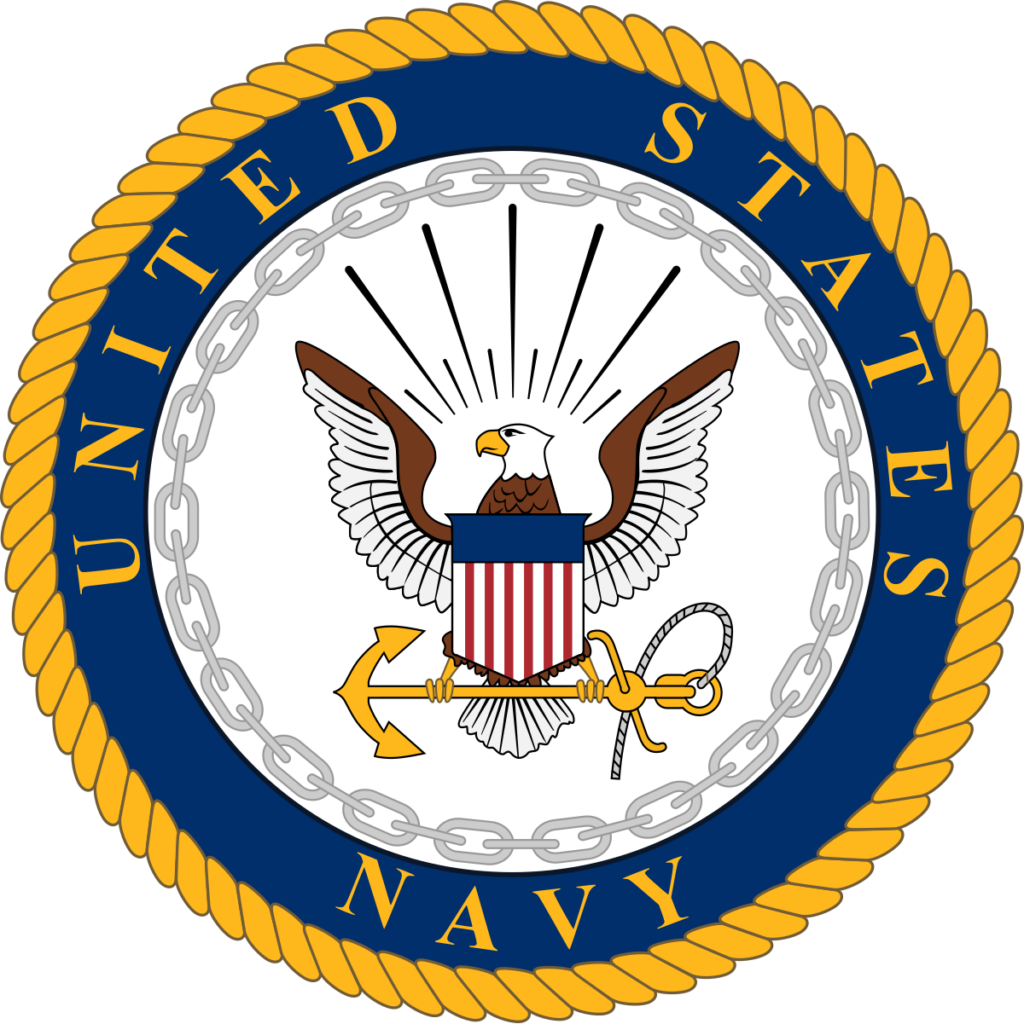
Military Heritage Museum Collection

United States Navy
- Overview of the U.S. Navy:
- Founded: October 13, 1775 (Second-oldest branch of the U.S. military)
- Mission: “To maintain, train, and equip combat-ready naval forces capable of winning wars, deterring aggression, and maintaining freedom of the seas.”
The United States is a maritime nation, and the U.S. Navy protects America at sea. Alongside our allies and partners, we defend freedom, preserve economic prosperity, and keep the seas open and free. Our nation is engaged in long-term competition. To defend American interests around the globe, the U.S. Navy must remain prepared to execute our timeless role, as directed by Congress and the President.
The United States Navy traces its origins to the Continental Navy, which the Continental Congress established Oct. 13, 1775, by authorizing the procurement, fitting out, manning and dispatch of two armed vessels to cruise in search of munitions ships supplying the British Army in America. The legislation also established a Naval Committee to supervise the work. All together, the Continental Navy numbered some 50 ships over the course of the war, with approximately 20 warships active at its maximum strength.
After the American War for Independence, Congress sold the surviving ships of the Continental Navy and released the seamen and officers. The Constitution of the United States ratified in 1789, empowered Congress “to provide and maintain a navy.” Acting on this authority, Congress ordered the construction and manning of six frigates in 1794, and the War Department administered naval affairs from that year until Congress established the Department of the Navy April 30, 1798.The Navy is the only service mandated as a requirement in the Constitution of the United States. The official birthday of the U.S. Navy is Oct. 13
U.S. Navy 101:
U.S. Navy Official Website:
https://www.navy.mil/
- The Mission of the U.S. Navy
- Naval Warfare & Sea Control
- The Navy’s primary job is to maintain dominance over the world’s oceans to ensure U.S. interests and global stability.
- This involves surface ships, submarines, and aircraft.
- Power Projection
- The U.S. Navy is capable of deploying forces anywhere in the world within days.
- It achieves this through aircraft carriers, amphibious ships, and naval bases around the globe.
- Strategic Deterrence & Global Presence
- The Navy’s nuclear-armed submarines act as a powerful deterrent against major conflicts.
- Continuous patrols ensure that enemies cannot strike first without facing severe retaliation.
- Humanitarian & Disaster Response
- The Navy plays a key role in global disaster relief, responding to earthquakes, tsunamis, and hurricanes.
- Aircraft carriers serve as floating hospitals and supply centers during crises.
Navy Ranks & Organization: https://www.navy.mil/About/Ranks/
Navy Humanitarian Missions: https://www.navy.mil/Resources/Navy-Humanitarian-Assistance/
III. History & Founding of the U.S. Navy
- Revolutionary War (1775-1783)
- The Continental Navy was created on October 13, 1775, to disrupt British supply lines.
- Early naval heroes like John Paul Jones helped shape naval tactics.
- The War of 1812 (1812-1815)
- U.S. Navy ships like the USS Constitution (“Old Ironsides”) won key victories against the British.
- The Expansion of the Navy (Late 1800s – Early 1900s)
- Alfred Thayer Mahan’s naval strategy emphasized the importance of sea power.
- The U.S. built a modern steel fleet, expanding global influence.
- World War I & II (1917-1945)
- The Navy played a major role in defeating German U-boats in WWI.
- In WWII, the Navy’s Pacific Campaign (Pearl Harbor, Midway, Island Hopping) helped secure victory over Japan.
- Cold War to Modern Day (1945-Present)
- The Navy’s role expanded with nuclear-powered aircraft carriers and submarines.
- In the 21st century, cyber warfare, drone technology, and maritime security have become priorities.
History of the U.S. Navy:
https://www.britannica.com/topic/United-States-Navy
Navy Modernization & Technology:
https://www.defense.gov/News/Feature-Stories/Story/Article/3030923/navy-modernization-efforts/
- Key Roles of the U.S. Navy
- Protecting Sea Lanes
- 90% of global trade happens over the ocean.
- The Navy ensures that major shipping routes remain open and safe.
- Aircraft Carrier Operations
- The U.S. Navy operates 11 aircraft carriers, more than any other country.
- These are like floating cities with fighter jets, helicopters, and crew members.
- Nuclear Deterrence & Submarine Force
- The Navy’s ballistic missile submarines (SSBNs) patrol silently, ensuring national security.
- The “Nuclear Triad” (Air Force bombers, land-based missiles, and Navy submarines) keeps America safe.
The many ways to serve in the U.S. Navy:
https://www.navy.com/navy-life
The impact of Sea Power:
https://media.defense.gov/2014/Feb/21/2002655461/-1/-1/1/140221-N-ZZ182-5367.pdf
- Famous Fleets & Units
- Navy SEALs (Sea, Air, and Land Teams)
- Elite special forces unit known for high-risk missions, including the raid on Osama bin Laden.
- Trained in combat diving, parachuting, and counterterrorism operations.
- Blue Angels (Flight Demonstration Squadron)
- Performs air shows worldwide, showcasing naval aviation skill.
- Helps recruit young Americans into the Navy.
- Submarine Force (Silent Service)
- The Navy’s submarines conduct secret missions, including intelligence gathering and nuclear deterrence.
- Carrier Strike Groups (CSGs)
- Each aircraft carrier is accompanied by destroyers, submarines, and support ships.
- These groups enforce U.S. presence across the world’s oceans.
Famous Navy Leaders:
https://www.history.navy.mil/our-collections/photography/us-people.html
Famous Navy Ships:
https://www.history.navy.mil/browse-by-topic/ships.html
- Notable Contributions of the U.S. Navy
- World War II: The Pacific Theater (1941-1945)
- The Battle of Midway (1942) was the turning point in the war against Japan.
- Island Hopping Strategy helped the U.S. retake key territories.
- Naval Blockades & Trade Protection
- The Cuban Missile Crisis (1962): The Navy enforced a blockade to prevent Soviet missiles from reaching Cuba.
- Today, the Navy helps prevent illegal smuggling, piracy, and trafficking.
- Anti-Piracy & Counterterrorism
- The Navy patrols high-risk areas like the Gulf of Aden and the South China Sea.
- U.S. Navy SEALs rescued Captain Richard Phillips from Somali pirates in 2009.
Important Navy Events in history: https://www.usni.org/magazines/proceedings/2011/may/ten-most-pivotal-events-us-naval-aviation
US Navy history timeline of major events since 1775:
http://www.militarywives.com http://www.militarywives.com/index.php/navy-history